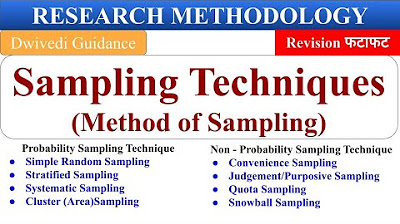Populasi dan Sampling
Summary
TLDRThis video explains key concepts in research, focusing on population and sampling techniques. The speaker defines population as a group of subjects being studied, and sampling as a subset that represents the population. It covers probability sampling methods, such as simple random, stratified, and cluster sampling, and non-probability methods like convenience and snowball sampling. The importance of selecting a proper sampling technique to ensure valid, generalizable results is emphasized. The video also touches on calculating sample size using tools like J-power or online calculators, highlighting the need for replication in research to strengthen external validity.
Takeaways
- 😀 Population refers to the group of subjects that are the focus of a research study and are being generalized from the results.
- 😀 A sample is a subset of the population that is selected for study to represent the larger group accurately.
- 😀 Sampling is essential for research when it is not feasible to study an entire population due to time or resource constraints.
- 😀 Probability sampling gives everyone in the population an equal chance of being selected, ensuring more valid and generalizable results.
- 😀 Non-probability sampling does not give everyone in the population an equal chance of being selected, which can impact the generalizability of results.
- 😀 Simple random sampling involves selecting individuals randomly from a population, where each member has the same probability of being chosen.
- 😀 Stratified random sampling divides the population into subgroups (strata) and samples are taken proportionally from each group.
- 😀 Cluster random sampling involves selecting entire groups or clusters from the population rather than individuals.
- 😀 Convenience sampling is a non-random technique where the sample is selected based on accessibility and ease, often used in online surveys.
- 😀 Snowball sampling is used to research hidden or hard-to-reach populations, where one subject helps identify others for the study.
- 😀 When deciding between probability and non-probability sampling, probability sampling is preferred for greater validity and reliability in generalizing results.
Q & A
What is the definition of 'population' in research?
-In research, 'population' refers to the entire group of subjects or units that the researcher intends to study and generalize from. It includes all individuals who fit the criteria set for the research.
How does the homogeneity of a population affect the sampling process?
-The more homogeneous a population is, the easier it becomes to sample, as the characteristics of the population are more uniform. For example, narrowing the population to a specific group (e.g., male high school students) makes the sampling process more focused.
What is the difference between 'population' and 'sample'?
-A population refers to the entire group being studied, while a sample is a smaller subset of that population selected for detailed examination. The sample should ideally represent the population accurately for valid research conclusions.
Why is 'sampling' necessary in research?
-Sampling is necessary because studying an entire population can be costly, time-consuming, and impractical. A well-chosen sample allows researchers to make inferences about the population efficiently.
What is 'simple random sampling'?
-Simple random sampling is a probability sampling technique where each member of the population has an equal chance of being selected. It is akin to drawing names out of a hat and is most effective when the population is small and homogeneous.
What is 'stratified random sampling' and when is it used?
-Stratified random sampling involves dividing the population into subgroups or strata based on specific characteristics (such as faculty in a university) and then randomly selecting samples from each subgroup. This method ensures proportional representation of all subgroups in the final sample.
How does 'cluster random sampling' differ from other sampling methods?
-In cluster random sampling, entire groups (or clusters) are selected rather than individual members. For example, a researcher may select entire classes or districts as the sample, rather than individuals, which is helpful when individual data collection is difficult.
What are 'non-probability sampling methods'?
-Non-probability sampling methods are techniques where not every member of the population has an equal chance of being selected. These methods include convenience sampling, where researchers choose the easiest participants, and snowball sampling, where initial participants refer others.
What is the main issue with non-probability sampling methods?
-The main issue with non-probability sampling methods is that they may not accurately represent the population, which can lead to biased results and questionable external validity. These methods are often less generalizable than probability sampling methods.
How can researchers address validity concerns in non-probability sampling?
-Researchers can address validity concerns in non-probability sampling by conducting replication studies across different subgroups or populations. If the same results are found repeatedly, it increases confidence in the generalizability of the findings.
Outlines

This section is available to paid users only. Please upgrade to access this part.
Upgrade NowMindmap

This section is available to paid users only. Please upgrade to access this part.
Upgrade NowKeywords

This section is available to paid users only. Please upgrade to access this part.
Upgrade NowHighlights

This section is available to paid users only. Please upgrade to access this part.
Upgrade NowTranscripts

This section is available to paid users only. Please upgrade to access this part.
Upgrade NowBrowse More Related Video
5.0 / 5 (0 votes)





